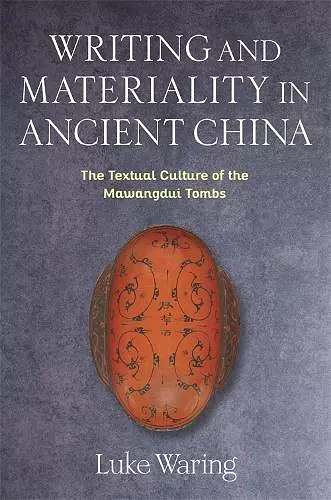Writing and Materiality in Ancient China
The Textual Culture of the Mawangdui Tombs
Format:Hardback
Publisher:Columbia University Press
Publishing:23rd Dec '25
£55.00
This title is due to be published on 23rd December, and will be despatched as soon as possible.

Excavations at the famous Mawangdui tomb site in south-central China (early to mid-second century BCE) have unearthed many kinds of writing, including documents made of silk, wood, and bamboo as well as a wide range of inscribed artifacts. This book is an interdisciplinary study of these varied forms of writing, exploring the different roles that texts played in the lives and afterlives of Chinese elites during the Han dynasty.
Examining documents and artifacts from the Mawangdui tombs in comparative perspective, Luke Waring demonstrates that early Chinese writing should be understood as part of the material and visual cultures of its time. Written texts were used to do more than simply preserve and transmit important information: they were also work tasks, storage items, performance aids, apotropaic talismans, aesthetically pleasing patterns, display pieces, possessions, and burial objects. Writing was even integrated into older, perhaps more powerful modes of cultural expression such as ritual performance and material display. Waring argues that manuscripts and inscribed objects were always things, artifacts that had powerful effects on the world that created them. Comprehensively researched and lavishly illustrated, Writing and Materiality in Ancient China offers a new understanding of the textual cultures of the early Western Han.
Fifty years ago, the discoveries of a perfectly preserved corpse in one tomb at Mawangdui and a substantial library in another tomb there astounded the scholarly world, giving rise to thousands of technical studies over the following decades. Now, Luke Waring’s Writing and Materiality in Ancient China provides a comprehensive overview of the tombs, of the lives and deaths of the people buried in them, and especially of the numerous kinds of writings buried with them. Probing in its detail, yet always attentive to broader questions of how to understand ancient culture, this is a model of what scholarship should be. -- Edward L. Shaughnessy, University of Chicago
This thoughtful, well-informed, and methodologically sophisticated book situates the early textual materials excavated from the tombs at Mawangdui in the lives of those who produced and handled them. Beautifully demonstrating the importance of archaeological context, Waring advances a new understanding of what literacy meant in second-century BC China. -- Lothar von Falkenhausen, University of California, Los Angeles
If a single word could characterize Waring's discussions of writing, reading, visuality, and materiality in the early empires in China, it would be "judicious." Waring's focused analyses of two spectacular tombs at Mawangdui (Changsha) are informative, balanced, and elegantly written. Regardless of academic field, novices and seasoned experts alike will find this book to be a classic by the standards of the very Han dynasty it considers: it says neither too little nor too much, and it rewards careful reading and rereading. -- Michael Nylan, University of California, Berkeley
In this book, Luke Waring presents a comprehensive and detailed discussion of the uniquely important Mawangdui manuscripts. Waring demonstrates masterfully what is gained when we consider manuscript texts not just in their specific materiality but also in their funerary and broader social context of text production. -- Matthias L. Richter, University of Colorado at Boulder
ISBN: 9780231219563
Dimensions: unknown
Weight: unknown
360 pages